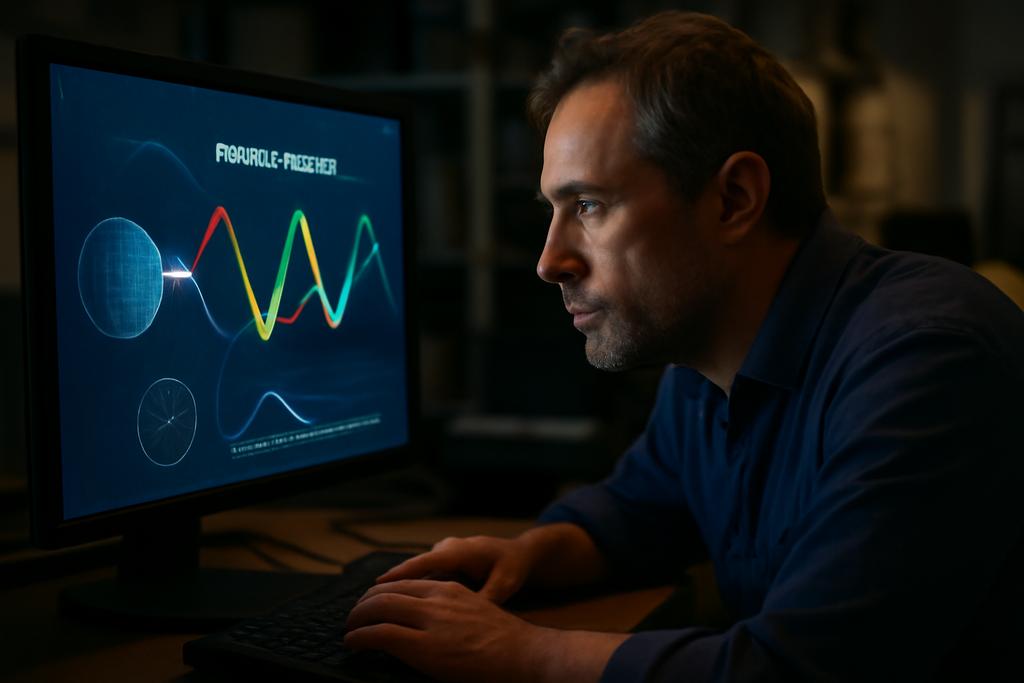Unraveling the Mystery of Neutrino Oscillations
Neutrinos, the elusive subatomic particles, are masters of disguise. These ghostly particles can morph between three different “flavors” – electron, muon, and tau – as they travel, a phenomenon known as neutrino oscillation. Understanding this quantum dance is crucial for probing the deepest mysteries of the universe, from the inner workings of stars to the nature of dark matter. However, accurately simulating the behavior of even a handful of interacting neutrinos is computationally demanding, a challenge tackled by researchers at the Laboratoire de Physique Subatomique et de Cosmologie (LPSC) in Grenoble, France and Universit´e Paris-Saclay, IJCLab in Orsay, France.
The Quantum Conundrum: Why Simulating Neutrinos is Hard
The difficulty stems from the complexity of the quantum mechanical equations governing neutrino oscillations. When neutrinos interact with each other, the problem becomes exponentially more difficult. While quantum computers offer a theoretical path to simulate these systems directly, current hardware limits simulations to a tiny number of particles. Classical approaches, on the other hand, struggle to model the quantum effects driving these interactions, often resorting to approximations that break down when neutrinos are numerous or interact over long periods.
Phase-Space Approximation: A Classical Breakthrough
This new research introduces a novel classical method to address this limitation: the Phase-Space Approximation (PSA). Imagine trying to predict the path of a single grain of sand in a roaring avalanche. It’s practically impossible. The PSA, however, doesn’t try to track each individual grain. Instead, it focuses on the overall flow of the avalanche, using statistical tools to approximate the movement of any given grain. This elegant approach transforms the intractable quantum problem into a manageable classical one, offering impressive accuracy and scalability.
Developed by Mariane Mangin-Brinet, Angel Bauge, and Denis Lacroix, the PSA builds upon earlier work, extending it from the simplified “two-flavor” model to a more realistic “three-flavor” model that accounts for all three neutrino types and their interactions. This is a significant leap. The researchers demonstrated its accuracy by benchmarking against exact solutions, where possible. The PSA performed exceptionally well, accurately capturing even subtle quantum features, like damping, that are usually missed by simpler classical methods. This success opens the door to simulating systems far larger than previously possible.
Scaling the Simulation: From a Handful to Hundreds of Neutrinos
The beauty of the PSA is its scalability. The computational cost increases linearly with the number of neutrinos—a stark contrast to the exponential increase seen with exact methods. This means we can simulate, on standard computers, the interactions of hundreds of neutrinos, far surpassing the capabilities of even the most advanced quantum computers available today. The researchers successfully performed simulations with up to 300 neutrinos, providing insights into the system’s equilibration properties — the point at which the different neutrino flavors reach a state of equilibrium.
Implications for Astrophysics and Beyond
These findings have important implications for various fields, most notably astrophysics. Supernovae, the explosive deaths of massive stars, are immense factories of neutrinos. Simulating these events accurately requires understanding the intricate dynamics of countless interacting neutrinos. The PSA opens a powerful new window into these events, allowing scientists to better model supernova explosions and their impact on the universe.
Beyond astrophysics, this work demonstrates the power of clever computational approaches. The PSA’s success not only advances our understanding of neutrino oscillations but also challenges our assumptions about the boundaries between classical and quantum computation. The fact that a classical method can accurately simulate a complex quantum phenomenon hints at the rich interplay between these two worlds and opens the door to new approaches for tackling other challenging scientific problems. It’s a testament to the enduring power of creative thinking and the unexpected paths that lead to groundbreaking discoveries.
A Classical Triumph in a Quantum World
The development of the PSA represents a significant breakthrough in simulating neutrino oscillations. This sophisticated classical approach tackles a long-standing problem, accurately modeling neutrino interactions on a scale previously unattainable. The work’s implications extend beyond the world of neutrinos, highlighting the surprising potential for classical methods in deciphering the complexities of the quantum realm. The elegance and efficiency of the PSA makes it a valuable tool for astrophysicists and a compelling demonstration of ingenuity in computational science.










